The New Jersey Devils took a step forward a season ago because they got well above league-average goaltending from Vitek Vanecek and Akira Schmid. Despite trade rumors surrounding the Devils and Connor Hellebuyck earlier this offseason, it appears they’ll enter the season with Vanecek and Schmid as their tandem. How do they stack up against the rest of the Metropolitan Division? Let’s take a look.
Devils Goaltending
The Devils acquired Vanecek at the 2022 draft with the hopes he’d help support Mackenzie Blackwood. As it turns out, Schmid would take over Blackwood’s role due to 1) injuries and 2) outplaying Blackwood. Schmid finished the regular season with a .922 save percentage and stopped 8.2 goals above expected across 18 games.
Meanwhile, Vanecek was everything the Devils could’ve asked for during the regular season. He went 33-11-4 with a .911 SV% and saved 5.1 goals above expected. He struggled in the playoffs, giving up 7.7 more goals than expected, but Schmid shined, helping the Devils get past their archrivals, the New York Rangers, in a thrilling seven-game series in the first round.
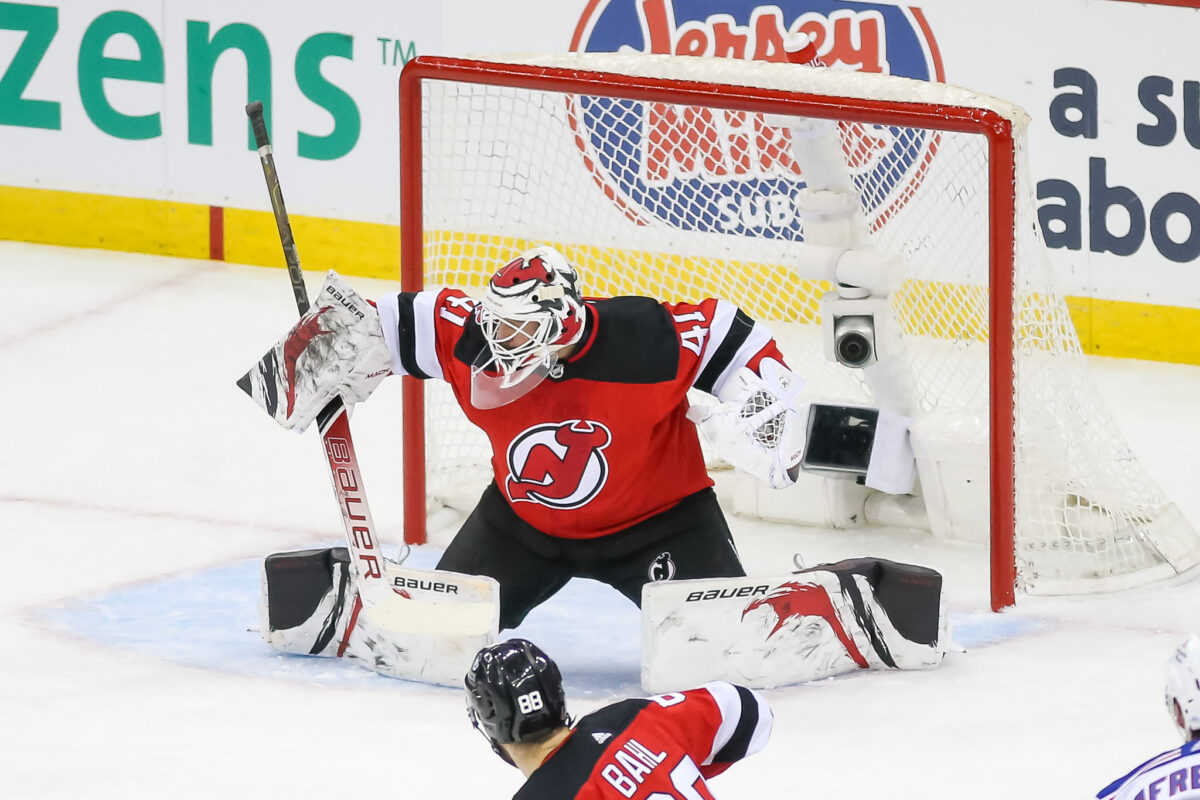
If Schmid and Vanecek play the way they did a season ago in 2023-24, the Devils will be in a fight for first place with the Carolina Hurricanes in the Metropolitan Division. Goaltending is the most challenging position to predict due to its volatility, but let’s do our best to compare the Devils against their division foes. We’ll start with the Hurricanes and work down the 2022-23 standings.
Carolina Hurricanes
There was some speculation the Hurricanes would shake up their netminding situation this offseason. That didn’t turn out to be the case, as they re-signed Frederik Andersen (two years) and Antti Raanta (one year) to new contracts. They’ll also have Pyotr Kochetkov, who’s waivers-exempt and eligible to bounce around between the NHL and AHL.
Andersen had a Vezina-worthy year in 2021-22, totaling a .922 SV% while saving 27.8 goals above expected. But he took a step back this past season, finishing with a .903 SV% while giving up 3.5 more goals than expected. He wasn’t awful by any stretch, but he wasn’t elite, which speaks to the volatility of the position.
Andersen’s partners were quite solid, though. Raanta, who’s long been one of the better 1Bs in the NHL, finished with a .910 SV% while stopping 1.3 goals above expected. He was the better of the two, but he wasn’t the Hurricanes’ best goaltender. That goes to Kochetkov, who finished with a .909 SV% while stopping 4.9 goals above expected, the best of the Hurricanes’ trio.
Carolina will likely use three goalies again this season, especially since Raanta and Andersen have injury histories. Based on 2022-23, they will be an above-average group at a minimum. But if Vanecek and Schmid perform the way they did a season ago, the Devils should have a slight edge over the Hurricanes in this department.
New York Rangers
The Rangers’ goaltending starts and ends with Igor Shesterkin, who’s a top-three netminder in the NHL. Shesterkin wasn’t as dominant as in 2021-22 when he posted a .935 SV% and won the Vezina Trophy. But he was still one of the best goalies in the NHL a season ago, finishing with a .916 SV% while saving 28.1 goals above expected.
Shesterkin is elite and automatically gives the Rangers an edge over the Devils in between the pipes, but his new backup narrows the gap. After parting ways with Jaroslav Halak, the Rangers signed Jonathan Quick to a one-year deal to back up Shesterkin for the 2023-24 season.
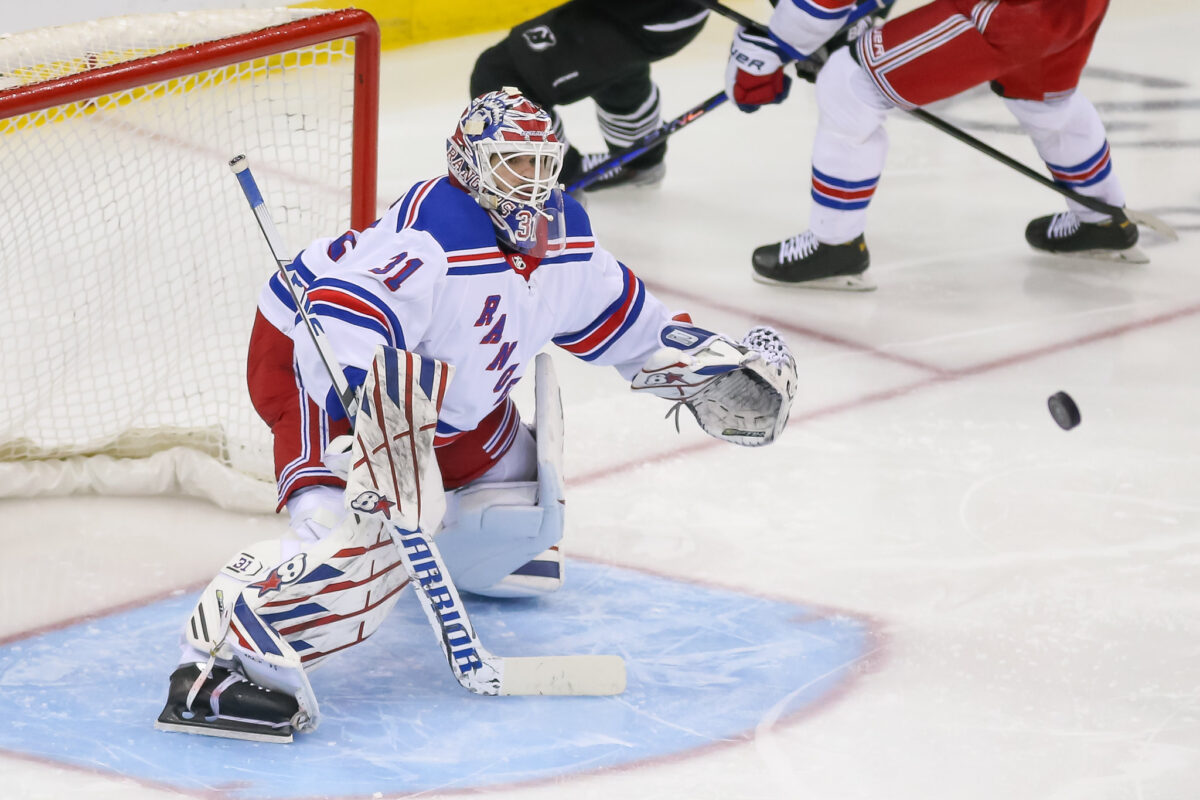
Quick was once one of the elite netminders in the game, but he has struggled mightily for quite some time. He finished 2022-23 with an .882 SV% while giving up 17.2 goals above expected. That latter number was the fifth worst in the NHL.
Behind a Rangers defense that will give up their fair share of shots and chances, that could be a problem when Shesterkin isn’t in net. The Rangers have the edge because of Shesterkin, but Schmid is a clear upgrade over Quick, making this closer than it should be.
New York Islanders
Like the Rangers, the Islanders have an elite netminder in Ilya Sorokin, who finished this past season with a .924 SV%. Not only was his SV% fantastic, but he stopped an incredible 38.7 goals above expected. Had it not been for him, the Islanders would not have come close to sniffing the playoffs.
Sorokin is outstanding and is arguably the best goalie in the NHL, but the difference between the Islanders and Rangers is the former has a better tandem than the latter. Semyon Varlamov may be getting up there in age, but he’s still one of the better 1Bs in the NHL. He finished the 2022-23 season with a .913 SV% and saved 3.5 goals above expected. His workload won’t come close to Sorokin’s, but he will give the Islanders a chance to win most nights when Sorokin isn’t in net.
Related: Devils Defense vs. Rest of Metropolitan Division
Though the Devils have a better group of skaters, the Islanders have a clear edge in net. That’s not a knock on Vanecek and Schmid, who were more than solid a season ago. But Sorokin and Varlamov have the experience, resumés and results over the Devils’ tandem.
Pittsburgh Penguins
In a somewhat surprising move, Penguins President of Hockey Operations and General Manager Kyle Dubas opted to re-sign Tristan Jarry to a five-year extension worth $5.375 million annually. Jarry has spent his entire career with the Penguins, but it’s been an up-and-down tenure:
- 2019-20: .921 SV%
- 2020-21: .909 SV%
- 2021-22: .919 SV%
- 2022-23: .909 SV%
Part of that rollercoaster has been health-related, as Jarry has struggled with injuries. But when he’s on, he’s a top half of the league netminder; he finished the 2021-22 season saving 12.8 goals above expected. The question is, which Jarry will the Penguins get in 2023-24? Because there are question marks behind him.
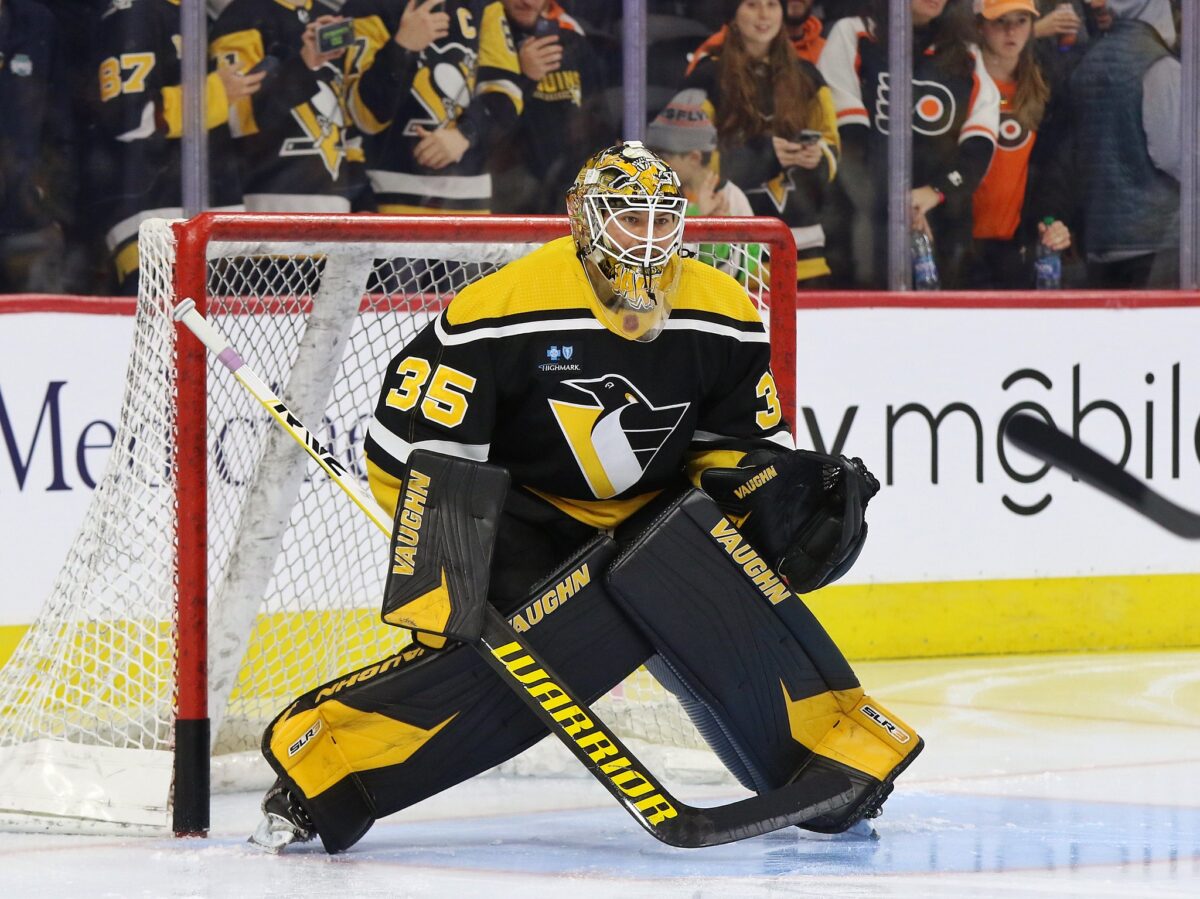
After parting ways with Casey DeSmith, Alex Nedeljkovic is the team’s new backup. He showed incredible promise during the COVID-shortened season in 2020-21 but has regressed significantly since then. He finished 2022-23 with an .895 SV% and allowed 8.9 goals above expected. The Red Wings placed him on waivers, leading him to finish the season in the AHL, where he totaled a .912 SV% in 26 games.
Dubas took a chance on Ilya Samsonov with the Toronto Maple Leafs last offseason, and that worked out, as he rebounded and posted a .919 SV% in 2022-23. The Penguins don’t need a Samsonov-like rebound from Nedeljkovic, but given Jarry’s injury history, they will need him to be much better than he was in Detroit.
There is some upside to the Penguins’ tandem, but there’s also quite a bit of uncertainty. Schmid may still be a bit unproven, but he has more potential than Nedeljkovic at this point in their careers. We know Vanecek is at least an above-league-average netminder and probably a safer bet than Jarry. The advantage goes to the Devils, but it’s not too significant.
Washington Capitals
It wasn’t a great 2022-23 season for the Capitals, but Darcy Kuemper fared well in his first season in Washington. It wasn’t a typical Kuemper year, but he posted a .908 SV% and stopped 8.8 goals above expected. That’s still well above league average, and I’d expect that kind of performance from him at a minimum in 2023-24. But that may be his ceiling behind a Capitals defense that should rank toward the bottom third of the NHL.
Backing up Kuemper is Charlie Lindgren, who totaled an .899 SV% in his first season in Washington. His underlying numbers weren’t great either, as he allowed 3.9 goals more than expected. Kuemper is capable of reaching another level, but Lindgren’s ceiling is limited. Even if Kuemper raises his game, the Devils’ tandem should be better in 2023-24.
Philadelphia Flyers
The Flyers weren’t any good last season, but one positive to come away from it was Carter Hart bouncing back after a rough couple of years. He got off to a scorching hot start but cooled off as the season progressed. Still, his numbers were solid, as he finished with a .907 SV% and saved 10.3 goals above expected.
The Flyers are unlikely to be playoff contenders in 2023-24, but they need Hart to have another solid season to give them an idea of whether he should be part of their rebuild. Backing him up could be Samuel Ersson, who fared well in limited action last season. His SV% of .899 may not seem great, but he did save 1.7 goals above expected. He’s a promising prospect who could figure into the Flyers’ future plans.
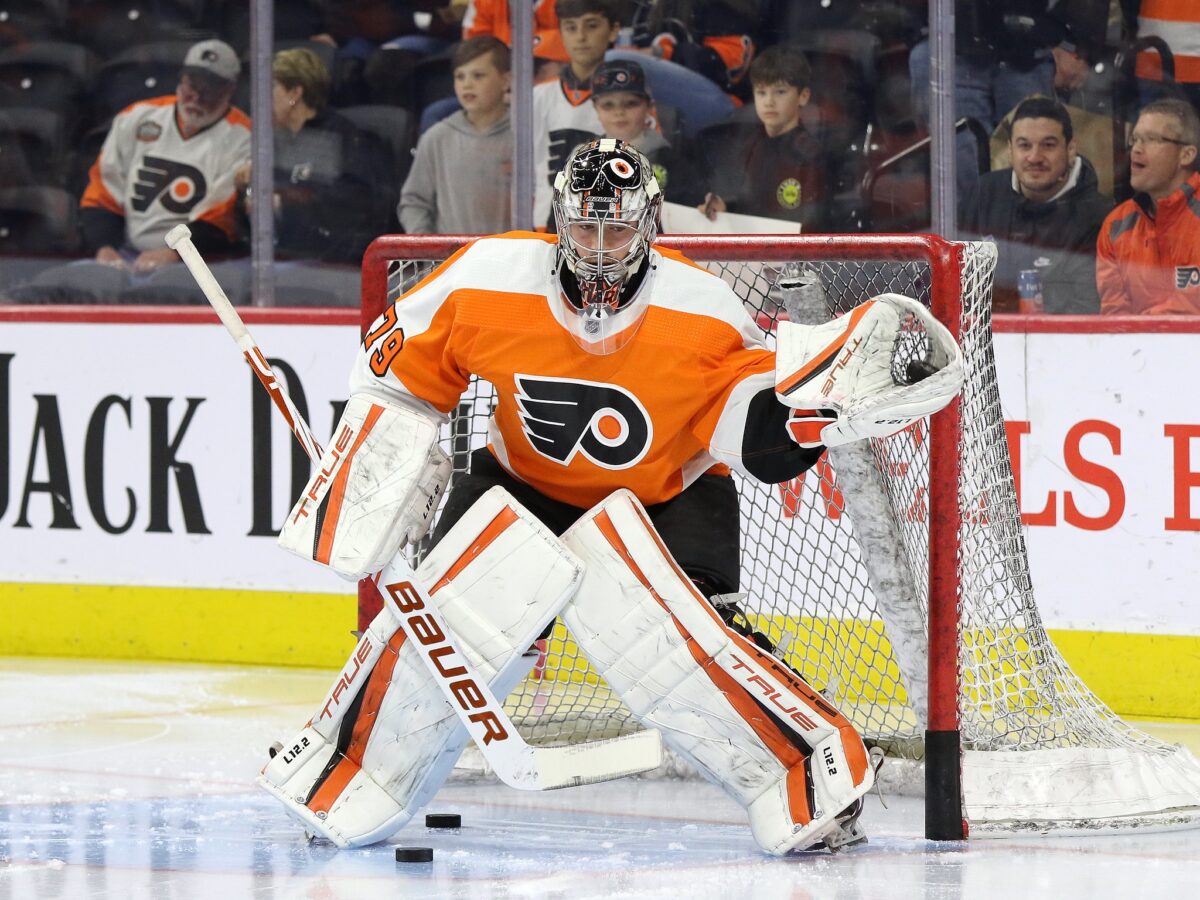
If Ersson isn’t in the NHL, the Flyers could turn to Cal Petersen, who they acquired in the three-team deal that sent Ivan Provorov to the Columbus Blue Jackets. Petersen struggled mightily with the Los Angeles Kings over the last two seasons. A change of scenery may help, but I’m not sure the Flyers should expect much from him.
Petersen has an .890 SV% over the last two seasons and has given up 17.7 goals above expected. Coach John Tortorella seems to know how to get the most out of his goalies, so Petersen has that working in his favor. But even then, the Devils’ tandem should fare better than whichever combination the Flyers use this season.
Columbus Blue Jackets
The Blue Jackets may have had the worst defense in the Eastern Conference a season ago, but their goaltending didn’t help matters. Elvis Merzlikins struggled mightily in 2022-23, finishing with an .876 SV% and allowing 25.9 goals more than expected. That latter number was the worst in the NHL among all goalies.
One of Merzlikins’ backups, Daniil Tarasov, didn’t fare much better, as he finished with an .892 SV% while giving up 7.3 goals above expected. You can blame the Blue Jackets’ defense, but Joonas Korpisalo fared well before getting dealt to the Kings, posting a .911 SV% and a positive goals saved above expected.
The Blue Jackets’ defense should be better with Provorov and Damon Severson in the fold, plus a healthy Zach Werenski. That gives Merzlikins and Tarasov some bounce-back potential, but they might not be the caliber the team needs to take a step forward. The Devils have a clear edge over the Blue Jackets in this department.
Devils Goaltending Should Compete With Metro’s Best
The Islanders and Rangers have the best goaltending in the Metropolitan Division because they have two of the three best netminders in the NHL. Even if the Rangers have a shaky backup situation with Quick, it only narrows the gap between them and the Devils. It doesn’t erase it. And with Varlamov supporting Sorokin as his backup, it gives them the best goaltending setup in the Metro.
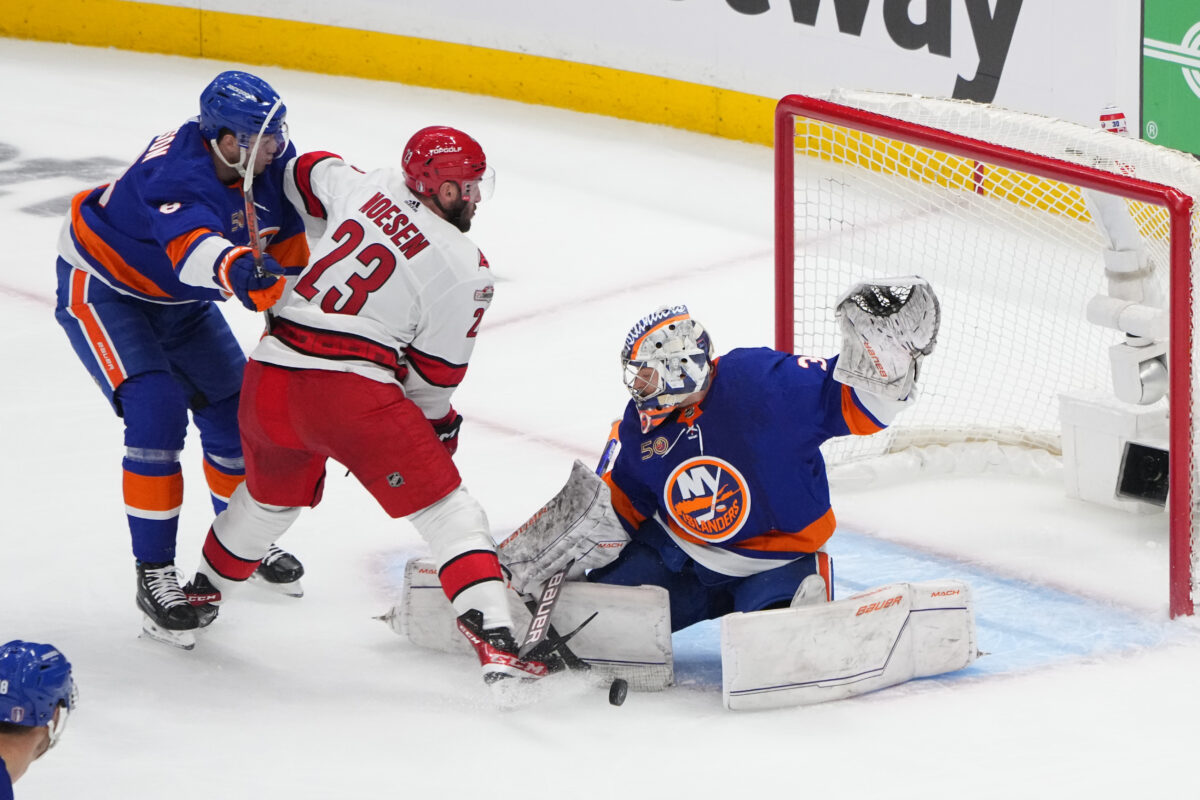
After that, it’s debatable where the Devils fall in the division. Recency bias is a thing with Vanecek because of his poor playoff performance, but he finished the regular season with a .911 SV% and saved 5.1 goals above expected. Those are well above average numbers. Schmid only has 33 games of NHL experience, so there’s still uncertainty as to what he’ll be, but it’s hard to deny the upside.
The Hurricanes can challenge the Devils for the third-best goaltending situation in the Metro if Andersen rebounds or Kochetkov breaks out as a true starter. But at worst, the Devils have a top-four tandem. It’s a far cry from where the team was in 2021-22 when they used seven different goalies, and they should be in good hands with what they have in Vanecek and Schmid.
* * *
Advanced stats from Money Puck
